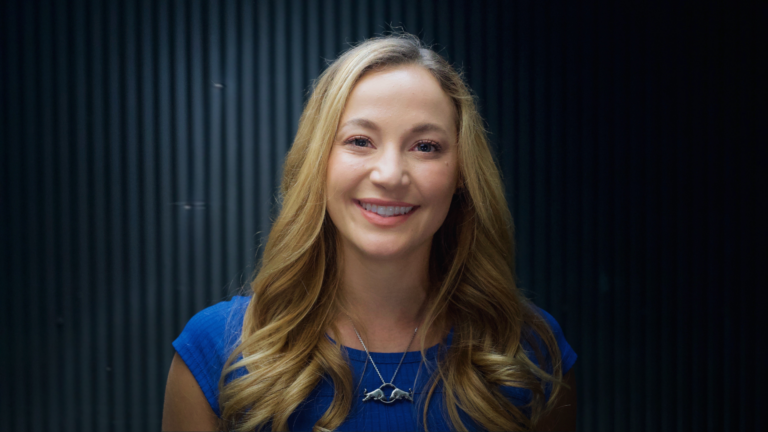This week’s conversation is with Dr. Andrew Huberman, a neuroscientist and tenured Professor in the Department of Neurobiology at the Stanford University School of Medicine.
He has made numerous important contributions to the fields of brain development, brain function and neural plasticity, which is the ability of our nervous system to rewire and learn new behaviors, skills and cognitive functioning.
He is a McKnight Foundation and Pew Foundation Fellow and was awarded the Cogan Award in 2017, which is given to the scientist making the largest discoveries in the study of vision.
Andrew is also actively involved in developing tools now in use by elite military in the US and Canada, athletes, and technology industries for optimizing performance in high stress environments, enhancing neural plasticity, mitigating stress, and optimizing sleep.
In this conversation we discuss the influence of vision and respiration on human performance and brain states such as fear and courage.
“The eyes are fundamentally the most powerful driver of what we think, what we feel, and ultimately what we can do, because they set the basic level of alertness or sleepiness.”
In This Episode:
What inspired him to study the brain?
I had all these questions that eventually I took to my scientific career. Questions about, why do some kids take a sip of alcohol and become alcoholics? Whereas I didn’t feel that. And why do some people go down the path of depression and suicide, violence, and others just focus on their sport or their craft? It was clear to me in those years that people were showing up with different genetic makeups, different propensities for success.
His first class
I went off to college, I took a class in bio-psychology because back then there wasn’t a field called neuroscience. What we now call neuroscience was fractured into neurochemistry and neuro genetics and psychology and bio-psychology, and now it’s this unified naming thing we call neuroscience. But I took a course that got me really excited about thermal regulation, how we regulate body temperature, as well as addiction. I was really interested in the biology of addiction. Actually, my senior project was looking at how MDMA, ecstasy, leads to shifts in body temperature. And back then there was a big rave culture. I’d never been to a rave, I’d never done MDMA. I thought it was a cool project so that’s what I did for my senior thesis.
Everything starts with the eyes
We think of the eyes as for seeing, for seeing objects, where they move, et cetera. But that’s actually a late stage evolution of what eyes were designed for. Eyes were designed, first and foremost, to set the overall arousal state, the alertness or the sleepiness of the rest of the nervous system. Think about it. How does your brain know when to be awake or when to be asleep? Well, it knows, based on when the sun is out or when the sun is down. We’re a diurnal species, we’re not a nocturnal species. And so, every cell in our body has that 24 hour clock. If you take out a cell from your liver and put it in a dish, it will have a rhythm in activity, a rhythm in metabolism. That’s a 24 hour rhythm or very close to it, so called circadian rhythm. And so the eyes are responsible for instructing the brain, and then the brain is responsible for instructing all of the cells of the rest of the body, when to do their respective jobs. Just like at a factory, not all the cells are going to do the same things at the same times, but they need to know when to do what they need to do.
Why are the eyes so powerful?
The eyes are fundamentally the most powerful driver of what we think, what we feel, and ultimately what we can do, because they set the basic level of alertness or sleepiness. And they do it not just at a low subconscious level, there are also ways in which the eyes are adjusting these things on very fast time scales. And that impact our health on very fast time scales. We eventually realized that vision has such a powerful effect on how we feel at a basic level, and has such a tremendous capacity to shift how we feel and how we perform cognitively and behaviorally, that we realized that we had to study how vision drives stress, how vision drives comm, how vision drives the ability to move through complex environments or high stress environments.
Sunlight Matters
A lot of people are jet lagged at home. They’re looking at screens at night and they’re not getting enough photons or light in their eyes during the day and their severe mood disruptions. That pattern of behavior actually triggers a pro-depressive circuit. There’s good evidence for that now.if the light comes in at the right time of day, you get an elevation in mood. If the light comes in at the wrong time of day, meaning at night, in the middle of the night, in particular between the hours of 11:00 PM and 4:00 AM, you get activation of this pro-depressive circuit that’s also signaled to the pancreas. So it throws off blood sugar regulation and metabolism, and can start creating some serious problems.
The Courage Circuit
When you move forward towards a threat, and it’s not always a physical threat of the sort like a big object coming at you or moving across a narrow beam across heights over between two buildings, it can also be public speaking. It can be confronting an irate boss in an intelligent way, in an adaptive way, of course again. But the forward movement itself revealed something really interesting to us, is that, that is the highest anxiety, highest arousal response. And yet when an animal or a human takes that step forward. And the reason we call it, the courage circuit is that it triggers activation of the release of a neurochemical called dopamine, which of course, many people are familiar with for its role in reward. But dopamine is not only involved in making us feel good. And it has this element of reward and it’s associated with reaching goals, but it also tends to reinforce, it changes the structure of those circuits so that we’re more likely to engage in that behavior again. In part, because it’s desirable, but in part, because the circuit itself gets wired up in a way that it’s more likely to get triggered in the future.
Dopamine is released en route to achieving goals
The dopamine system is, it’s most often talked about with gambling and drug abuse and sex behavior and here I’m talking about it with facing threats of a physical kind, but dopamine works on very long time scales. It’s what allows us to pursue things of great uncertainty over very long duration. I don’t want to go too far down in the weeds, but there’s this phenomenon of reward prediction error, which basically has to do with this fundamental discovery, not by my lab, but that shows that dopamine is released en route to goals, as you pursue goals. And that makes total sense because you need that dopamine release to replenish motivation. You need it to replenish drive. You need to give some buoyancy to the system to continue to march off toward these goals. And those goals can be very distant and based on a lot of uncertainties, but dopamine is really what moves mammals toward a new place from the place that they’re in.
If you’re a hard driving person…
You definitely want to use this dopamine system intelligently. You want to reward your little wins en route to your goals. And that can be through subjective, telling yourself that you made it to a small milestone, toward your team cohesion, whatever wins, you want to register those wins. You don’t need to over celebrate them, but you need to register them. Even if it’s just for moments, even if it’s just through gratitude, which is actually a powerful practice. And then when you reach a win, it has to be rewarded in a major way. And if you do that, it’s more likely you’ll be able to reengage those same circuits in the future.
When do we burnout?
Eventually burnout does happen because the rewards are not coming. You’re not getting dopamine in the right pattern. There’s something called reward prediction error. If you get more dopamine in pursuit, then you get when you finally reached the goal, it’s going to lead to a traumatic disappointment and traumatic depression. This is well studied in humans and in animals, reward prediction error says, if you get the dopamine signal at the final finish line has to exceed the dopamine along the way, or it becomes a depletion event.
Why do some people experience depression when they reach their “ultimate” goal?
I’ve seen this a lot out here in Silicon Valley. I have some friends in the tech community who’ve done very well for themselves. And then it’s like the depression sets in, “What’s the meaning? What am I going to do? I need to do 45 transcendental meditation retreats. I need to find myself.” Which is great. And I applaud their self discovery, right? And it’s not just people in the tech sector. But what they haven’t done in most cases is support these serotonin systems and the reward systems that come from the deep satisfaction and joy that comes from great relationships, that come from your dog, a relationship with your dog or your cat, or if you’re a cat person or your children or your spouse, or your friends for that matter, or your coworkers, you have to balance these reward systems because they’re not just independent systems. They all support each other. And so that’s the struggle because we also need to work really hard in order to accomplish things.
How to induce calm via breathing
Inhale twice, ideally through the nose, and then you exhale long once through the mouth. So it’s inhale then another little inhale, even if you have to sneak in just a tiny bit more air and then a long exhale. Now, what this does, in addition to balancing the ratio of carbon dioxide and oxygen and the bloodstream in lungs, is it activates a circuit that goes from this very special organ, the diaphragm that we’ve all heard of, there’s a nerve that controls the diaphragm called the phrenic nerve, but that diaphragm also sends signals back to the brainstem and informs the brain about the status of the body.
How to sleep better
if you’re not sleeping great, view light early in the day, close to when you wake up, hopefully that’s in the morning. Ideally at sunlight, yes, it could be through a window, but ideally you would be outside and you just get two minutes to 10 minutes of sunlight. You don’t need to stare directly at the sun. And even if there’s cloud cover, a lot of photons are coming through. It doesn’t have to be sunny, Southern California. It can be the depth of Winter in England believe it or not. And a lot of light energy is coming through, far more than you’re going to get from artificial lights. The other thing is to get some sunlight in your eyes in the evening as the sun is setting because it sets the appropriate timing of secretion of this hormone, cortisol, which will make you alert at the right times of day. And you want cortisol dropping by about 9:00 PM. And in the psychiatric community, it’s well known that a peak in 9:00 PM cortisol is kind of a signature of anxiety and depression and it’s related to things like insomnia. You want cortisol up early in the day. You don’t want it coming up late in the day.
Utilize panoramic vision
What this enables you to do is actually to detect events in your environment on much faster time scales than you would, if you were focusing your vision very tightly. So great athletes know this, great martial artists know this, that if you really want to see things coming at you and detect all those events, you can’t afford to have your vision locked to any one location. So this is actually the mechanism that you use anytime you’re moving through space, and it’s what keeps you from running into other objects. It’s what allows you to see things in your periphery. People who have high situational awareness are often… They’re not scanning the environment by jumping their eyes from point to point, they’re bringing in the whole environment all at once, the whole gestalt.
Optic Flow
When you move through space, whether walking, running, or driving, you’re in what’s called optic flow. Things are moving past your retina at varying speed, depending on how fast you’re moving, but your brain has knowledge of how fast you’re moving. It cancels out the movement in a way that says, okay, these objects aren’t moving past me. I’m moving past them. All of this boils down to a set of circuits in the brain and body that make it so that when we’re moving through space, it has this property of relaxing us and giving us a sensation that is somewhat rewarding. And so what this translates to is at least once a day, get out and move. Optic flow doesn’t have to be fast. It can be at slow speeds. Ideally, it’s variable speeds, but this, I believe, underlies the sensation, the both calming and invigorating and kind of replenishing feelings that we get from taking a bike ride or a long run or swimming, for that matter.



